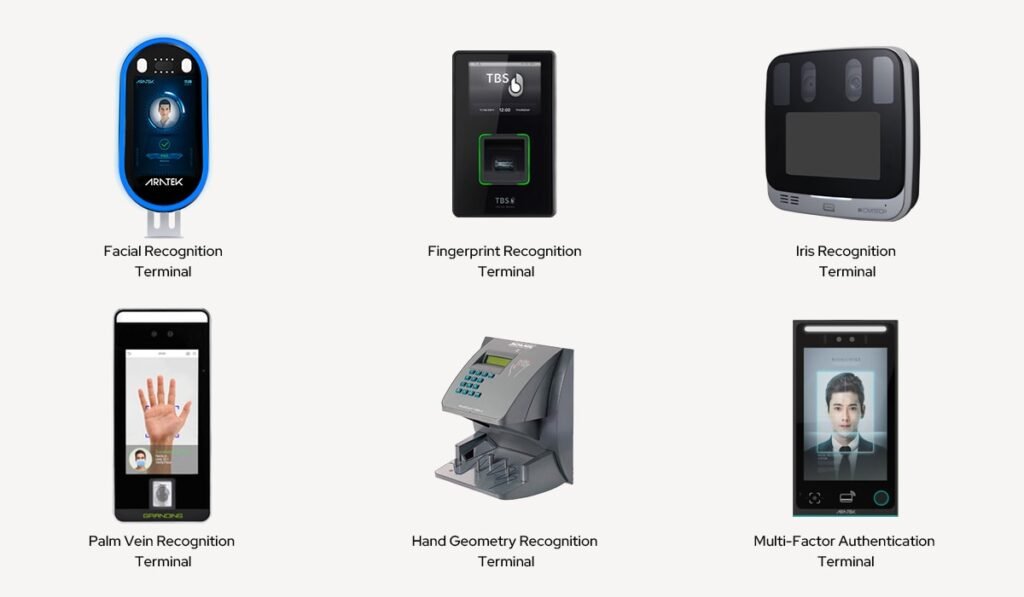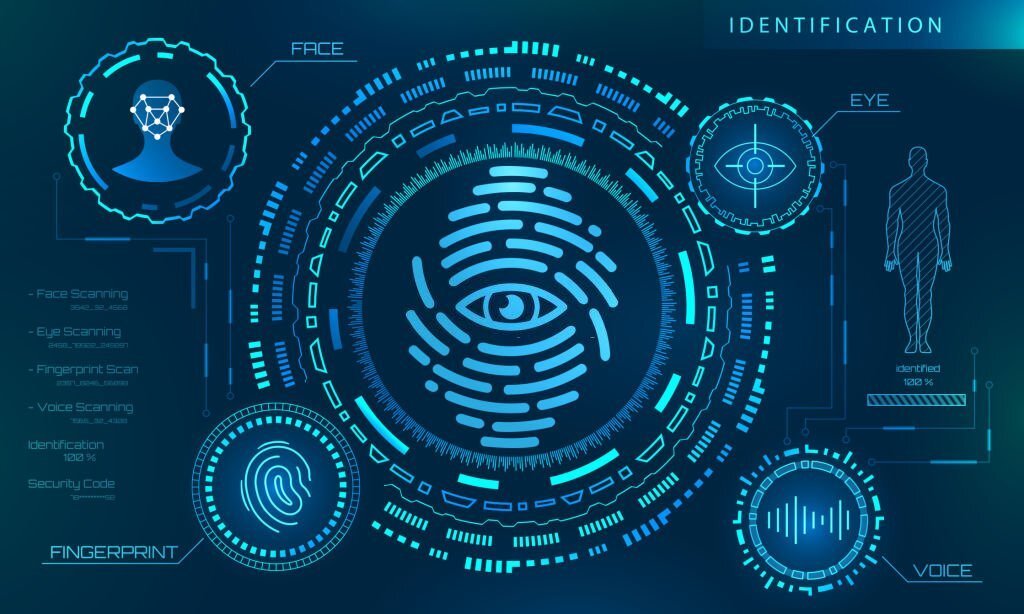Enhancing Security: Biometric Access Control Systems
Step into the future of security with the latest innovation in access control systems – biometric technology. No longer just a thing of science fiction, biometric access control systems offer a highly secure and convenient way to protect your home or business. With brands such as Ring, Nest, Arlo, Wyze, SimpliSafe, Eufy Security, and many others leading the way, these systems utilize unique biological traits, like fingerprints or facial recognition, to verify a person’s identity and grant them access. Say goodbye to outdated keys and easily compromised passwords, and say hello to a new era of enhanced security with biometric access control systems.

Introduction
Biometric access control systems have become an integral part of enhancing security in various settings. These systems utilize unique biological characteristics of individuals, such as fingerprints, facial features, iris patterns, retina scans, voice patterns, and hand geometry, to grant access to authorized individuals. By relying on these unique attributes, biometric access control systems offer a high level of security, eliminate the need for physical keys or access cards, and provide fast and convenient access. In this article, we will explore the different types of biometric access control systems, their advantages, integration with existing security systems, installation and setup procedures, factors to consider when choosing a system, challenges and limitations, as well as best practices for maintaining these systems.
Types of Biometric Access Control Systems
Fingerprint Recognition
One of the most widely used biometric access control systems is fingerprint recognition. This technology analyzes the unique patterns on an individual’s fingertips to grant access. Fingerprint recognition systems are highly accurate and offer fast and convenient access for users. They are widely implemented in various settings, including residential homes, offices, and government facilities.
Facial Recognition
Facial recognition is another popular biometric access control system that identifies individuals based on their facial features. This technology analyzes key facial landmarks and characteristics to grant access. Facial recognition systems have advanced significantly in recent years, becoming more accurate and reliable. They are often used in airports, stadiums, and other high-security areas.
Iris Recognition
Iris recognition systems utilize the unique patterns in an individual’s iris to authenticate their identity. The iris has complex and highly detailed structures that make it an effective biometric identifier. Iris recognition is known for its high accuracy and is often used in environments that require strict security measures, such as government buildings and research facilities.
Retina Recognition
Retina recognition is a biometric access control system that examines the blood vessels in an individual’s retina for identification. This technology captures the intricate and unique patterns found in the retina’s blood vessel network. Retina recognition systems are highly accurate and secure, making them suitable for high-security settings like financial institutions and military facilities.
Voice Recognition
Voice recognition systems analyze an individual’s unique vocal characteristics, such as pitch, tone, and pronunciation, to verify their identity. This biometric access control system is commonly used to grant access over phone lines or in voice-operated security systems. Voice recognition is convenient and user-friendly, as it does not require physical contact.
Hand Geometry Recognition
Hand geometry recognition systems measure and analyze various hand dimensions, such as finger length and hand shape, to authenticate an individual’s identity. This technology is often incorporated in physical access control systems, where an individual’s hand is placed on a sensor to grant access. Hand geometry recognition provides a high level of security and is widely used in settings like data centers and laboratories.
Advantages of Biometric Access Control Systems
High Level of Security
Biometric access control systems offer a significantly higher level of security compared to traditional access methods like keys or access cards. The uniqueness of an individual’s biometric characteristics makes it extremely difficult for unauthorized individuals to gain access. Biometric systems are designed to accurately identify and authenticate authorized individuals, reducing the risk of unauthorized entry.
User-friendly
Biometric access control systems provide a convenient, user-friendly experience. Users no longer need to remember or carry physical keys or access cards. Instead, they can easily gain access with a quick scan or input of their biometric data. This eliminates the hassle of lost or stolen keys and access cards, providing a seamless access control solution.
Eliminates the Need for Physical Keys or Access Cards
By eliminating the reliance on physical keys or access cards, biometric access control systems offer increased convenience and efficiency. There is no longer a need to carry multiple keys or access cards for different areas or rooms. Biometric systems simplify access control by relying on an individual’s unique biological characteristics, streamlining the process and reducing the risk of lost or stolen credentials.
Difficult to Forge or Replicate
Biometric access control systems are difficult to forge or replicate, making them highly secure. Traditional access methods like keys or access cards can be easily duplicated or stolen, leading to unauthorized access. Biometric characteristics, on the other hand, are unique to each individual and cannot be easily replicated without their presence, providing an added layer of security.
Fast and Convenient Access
Biometric access control systems offer fast and convenient access for authorized individuals. The authentication process is quick, often requiring just a few seconds for identification. This eliminates the need for individuals to spend time searching for keys or swiping access cards, allowing for a smooth and efficient entry process.
Ability to Track and Monitor Access
Biometric access control systems enable the ability to track and monitor access to different areas or rooms. With these systems in place, administrators can monitor who enters or exits specific locations, providing valuable data for security purposes. This feature is particularly useful in settings like workplaces or government facilities, where maintaining strict control over access is crucial.
Non-transferable and Non-shareable
Biometric access control systems rely on an individual’s unique biological characteristics, which are non-transferable and non-shareable. Unlike physical keys or access cards that can be shared or transferred between individuals, biometric data is tied directly to the individual and cannot be used by others. This ensures that only authorized individuals can gain access, enhancing overall security.
Integration with Existing Security Systems
Compatibility with Smart Home Security Brands
Biometric access control systems can be seamlessly integrated with various smart home security brands, enhancing overall security in residential settings. These systems can work alongside existing security devices and platforms, allowing homeowners to conveniently control access to their homes using their unique biometric data.
Ring Integration with Biometric Access Control Systems
Ring, a popular smart home security brand, offers integration with biometric access control systems. By linking Ring’s security devices, such as video doorbells and cameras, with biometric access control systems, homeowners can enhance their home security and control access more efficiently.
Nest Integration with Biometric Access Control Systems
Nest, another well-known smart home security brand, also offers integration with biometric access control systems. By integrating Nest’s security devices, like smart door locks and cameras, with biometric systems, homeowners can add an extra layer of security to their homes and have better control over access.
Arlo Integration with Biometric Access Control Systems
Arlo, a trusted brand in the security camera market, provides integration options with biometric access control systems. This integration allows homeowners to utilize Arlo’s cameras and biometric systems in harmony, providing a comprehensive security solution for their homes.
Wyze Integration with Biometric Access Control Systems
Wyze, a budget-friendly smart home security brand, also offers integration with biometric access control systems. By connecting Wyze’s security devices and biometric systems, homeowners can enhance the security of their homes and have better control over who enters their premises.
SimpliSafe Integration with Biometric Access Control Systems
SimpliSafe, a popular home security brand known for its DIY systems, supports integration with biometric access control systems. This integration allows homeowners to utilize SimpliSafe’s security devices and biometric systems together, providing a customizable and secure solution for their homes.
Eufy Security Integration with Biometric Access Control Systems
Eufy Security, a brand that focuses on providing reliable and user-friendly security solutions, offers integration options with biometric access control systems. By integrating Eufy Security’s devices with biometric systems, homeowners can enhance the security of their homes and conveniently control access.
Blink Integration with Biometric Access Control Systems
Blink, a brand known for its affordable and easy-to-install security cameras, supports integration with biometric access control systems. By combining Blink’s cameras with biometric systems, homeowners can monitor and control access to their homes with ease.
August Home Integration with Biometric Access Control Systems
August Home, a trusted name in smart door locks, provides integration options with biometric access control systems. Homeowners can seamlessly integrate August Home’s smart locks with biometric systems, offering enhanced security and convenience for their homes.
Honeywell Home Integration with Biometric Access Control Systems
Honeywell Home, a well-established brand in the home security market, offers integration with biometric access control systems. By combining Honeywell Home’s security devices with biometric systems, homeowners can enjoy a comprehensive and reliable security solution.
Ring Alarm Integration with Biometric Access Control Systems
Ring Alarm, the home security system offered by Ring, integrates seamlessly with biometric access control systems. This integration allows homeowners to have better control over their Ring Alarm system and access permissions, ensuring a secure environment.
Vivint Integration with Biometric Access Control Systems
Vivint, a leading provider of smart home security systems, supports integration with biometric access control systems. By integrating Vivint’s security devices with biometric systems, homeowners can enhance their home security and have greater control over access to their homes.

Installation and Setup
Setting up a Biometric Access Control System
Installing a biometric access control system involves several steps. First, you’ll need to choose the right system for your needs and purchase the necessary hardware and software. Once you have the system, you’ll need to install the biometric sensors at strategic access points. This can be done by following the manufacturer’s instructions or by hiring a professional for installation.
Proper Positioning of Biometric Sensors
The proper positioning of biometric sensors is crucial for accurate identification and authentication. The sensors should be placed at a comfortable height and angle for users to easily interact with. They should be strategically positioned to capture the required biometric data, such as fingerprints or facial features, without any obstructions.
Configuring User Profiles and Access Permissions
After the sensors are installed, you’ll need to configure user profiles and access permissions. This involves enrolling authorized individuals into the system by capturing their biometric data and assigning them specific access privileges. The system should have an intuitive user interface that allows administrators to easily manage user profiles and access permissions.
Integration with Existing Security Infrastructure
If you have an existing security infrastructure in place, it’s important to ensure that the biometric access control system can seamlessly integrate with it. This may involve connecting the system to other security devices or platforms, such as surveillance cameras or alarm systems. Compatibility and integration capabilities should be considered during the selection process of the biometric system.
Testing and Calibrating the System
Once the installation and configuration are complete, it’s crucial to thoroughly test and calibrate the system. This involves testing the accuracy and reliability of the biometric sensors by enrolling authorized individuals and conducting multiple authentication tests. Calibration may be required to fine-tune the system for optimal performance.
Factors to Consider when Choosing a Biometric Access Control System
Accuracy and Reliability
The accuracy and reliability of a biometric access control system are crucial factors to consider. The system should consistently and accurately identify and authenticate authorized individuals without false acceptances or rejections. It’s important to choose a system that has been tested and proven to have a high level of accuracy and reliability.
Ease of Use
An ideal biometric access control system should be easy to use for both administrators and users. The system should have an intuitive user interface that allows administrators to easily manage user profiles and access permissions. Users should also find the system user-friendly, with a seamless and quick authentication process.
Integration Capabilities
If you already have an existing security infrastructure in place, it’s important to choose a biometric access control system that can integrate smoothly with it. The system should be compatible with other security devices or platforms, allowing for a comprehensive and integrated security solution.
Scalability
Consider the scalability of the biometric access control system. Will the system be able to accommodate future growth or changes in access requirements? It’s important to choose a system that can easily scale up or down based on your evolving needs.
Durability and Resistance to Tampering
Biometric access control systems should be built to withstand various environmental conditions and attempts at tampering. The system should be durable and resistant to physical damage or interference. Look for systems that have been tested and certified for their robustness and resistance to tampering.
Cost and Budget
Consider your budget when choosing a biometric access control system. The cost will depend on factors such as the type of biometric technology used, the number of sensors required, and the scope of the installation. It’s important to find a balance between cost and the level of security and features offered by the system.
Warranty and Customer Support
Choose a system that comes with a warranty and reliable customer support. This ensures that you have access to technical help and assistance in case of any issues or questions regarding the system. Look for manufacturers or providers that offer responsive and helpful customer support.
User Feedback and Reviews
Take into account user feedback and reviews when choosing a biometric access control system. Reading reviews from other users can provide valuable insights into the system’s performance, reliability, and user experience. Consider feedback from users who have similar requirements and use cases as yours.

Challenges and Limitations of Biometric Access Control Systems
False Acceptance and Rejection Rates
One challenge of biometric access control systems is the false acceptance and rejection rates. False acceptance occurs when the system incorrectly identifies an unauthorized individual as authorized, allowing them access. False rejection, on the other hand, happens when the system fails to recognize an authorized individual, denying them access. These rates can be influenced by various factors, such as system accuracy, environmental conditions, and the quality of biometric data captured.
Environmental Factors Affecting Biometric Accuracy
Biometric accuracy can be affected by environmental factors, such as lighting conditions, temperature, and noise levels. For example, facial recognition systems may struggle in low-light conditions, affecting their accuracy. It’s important to consider these factors and choose a biometric system that performs well in the intended environment.
Privacy Concerns and Legal Regulations
Biometric access control systems involve the collection and storage of individuals’ biometric data, raising privacy concerns. It’s crucial to comply with legal regulations regarding the collection, storage, and processing of biometric data. Data protection practices should be followed to ensure the privacy and security of individuals’ biometric information.
Risk of Potential Biometric Data Breaches
Biometric data breaches pose a significant risk with biometric access control systems. If the stored biometric data is compromised, it can have serious consequences, as biometric data cannot be easily changed like passwords or access cards. It’s essential to implement robust security measures to protect stored biometric data from unauthorized access.
System Vulnerabilities and Hacking Threats
Biometric access control systems, like any other technological system, are vulnerable to hacking threats. Hackers may attempt to compromise the system’s security and gain unauthorized access. It’s crucial to choose a system that has undergone comprehensive security testing and incorporates security measures, such as encryption and secure communication protocols.
Best Practices for Maintaining Biometric Access Control Systems
Regular Software Updates and Patches
Regularly update the software and firmware of your biometric access control system to ensure it has the latest security features and bug fixes. Manufacturers often release software updates and patches to address vulnerabilities and improve system performance. Staying up to date with these updates is essential for maintaining the security and reliability of the system.
Enrollment and Removal of Users
Continuously manage user profiles and access permissions within your biometric access control system. Regularly enroll authorized individuals into the system, capturing their biometric data accurately. Similarly, promptly remove users who no longer require access, ensuring that only authorized individuals are granted entry.
Backup and Storage of Biometric Data
Implement a secure backup and storage system for the biometric data collected by the access control system. This ensures that the data is protected in case of system failure or data loss. Backup and storage should follow industry best practices and comply with legal regulations regarding data protection and privacy.
Proper Maintenance of Biometric Sensors and Devices
Regularly maintain and clean the biometric sensors and devices to ensure accurate and reliable performance. Dust, dirt, or debris on the sensors can affect their ability to capture precise biometric data. Follow the manufacturer’s guidelines for maintenance and cleaning to keep the system in optimal working condition.
Continuous Training and Education for System Users
Provide continuous training and education for individuals using the biometric access control system. This ensures that they understand the system’s functionality, correct usage, and the importance of maintaining the security of their biometric data. Regular training sessions or resources can help users stay updated with any changes or new features in the system.
Conducting Regular Audits and Security Assessments
Periodically conduct audits and security assessments of your biometric access control system. This involves reviewing access logs, user profiles, and system configurations to identify any anomalies or vulnerabilities. Engaging a third-party security professional to perform a comprehensive security assessment can provide valuable insights and recommendations for enhancing the system’s security.

Conclusion
Biometric access control systems offer a highly secure and convenient solution for enhancing security in various settings. Through the use of unique biological characteristics, such as fingerprints, facial features, iris patterns, retina scans, voice patterns, and hand geometry, these systems provide accurate identification and authentication of authorized individuals. The advantages of biometric access control systems include high security, user-friendliness, elimination of physical keys or access cards, difficulty in forgery or replication, fast and convenient access, the ability to track and monitor access, and non-transferability and non-shareability. By integrating biometric systems with existing security infrastructure, homeowners can enhance their home security using brands like Ring, Nest, Arlo, Wyze, SimpliSafe, Eufy Security, Blink, August Home, Honeywell Home, Ring Alarm, and Vivint. Installation and setup of biometric access control systems involve proper positioning of biometric sensors, configuration of user profiles and access permissions, integration with existing security infrastructure, and thorough testing and calibration. When choosing a system, it is important to consider factors such as accuracy and reliability, ease of use, integration capabilities, scalability, durability and resistance to tampering, cost and budget, warranty and customer support, as well as user feedback and reviews. Challenges and limitations of biometric access control systems include false acceptance and rejection rates, environmental factors affecting biometric accuracy, privacy concerns and legal regulations, risk of potential biometric data breaches, and system vulnerabilities and hacking threats. Best practices for maintaining biometric access control systems include regular software updates and patches, proper enrollment and removal of users, backup and storage of biometric data, proper maintenance of biometric sensors and devices, continuous training and education for system users, and conducting regular audits and security assessments. The growing adoption of biometric access control systems and their future potential indicate the importance of choosing reputable and reliable brands. With advancements in biometric technology, enhancing security through biometric access control systems continues to be a valuable and effective solution.
